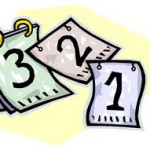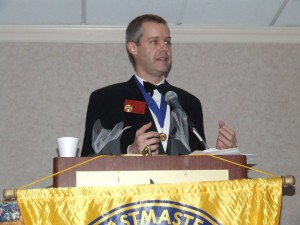 Education is such an important thing throughout life. Toastmasters is a great example of adult education, but I think we need to invest more in youth education. Kids who drop out of school are far more likely to get involved in gangs, commit crimes, go to prison, or at the very least, end up in low-paying menial jobs. And it’s not just the “dumb” kids who drop out of school, ones who wouldn’t do well anyway, it’s the smart ones too.
Education is such an important thing throughout life. Toastmasters is a great example of adult education, but I think we need to invest more in youth education. Kids who drop out of school are far more likely to get involved in gangs, commit crimes, go to prison, or at the very least, end up in low-paying menial jobs. And it’s not just the “dumb” kids who drop out of school, ones who wouldn’t do well anyway, it’s the smart ones too.
A lot of the problems in the U.S. can be attributed to poverty, and poverty is due to not working. Not working is due to either not wanting to work (poor work ethic) or not having the skills to get a good job.
That’s where our public schools let us down, especially in urban areas (and note that I live in Chicago, the third-largest city in the US). The overall drop-out rate in Chicago is 43% … those are people who will likely never get a good job, and at great risk of falling into a life of crime.
My MBA alma mater keeps asking for donations, but I keep thinking that $1000 would do a LOT more people a LOT more good if it was given to the public schools. Or better yet, if our government could do a better job of supporting our public schools. We have to make sure those dollars will be well spent, of course, and that includes making sure we recruit and retain the best teachers, and get the worst teachers moved into a different career that better fits their skills and ambitions.
The return on education (ROE, like return on investment, ROI) is immense, far greater than anything else we could do with our tax dollars. From the New York Times:
Alan B. Krueger, an economics professor at Princeton, says the evidence suggests that, up to a point, an additional year of schooling is likely to raise an individual’s earnings about 10 percent.
For someone earning the national median household income of $42,000, an extra year of training could provide an additional $4,200 a year. Over the span of a career, that could easily add up to $30,000 or $40,000 of present value. If the year’s education costs less than that, there is a net gain.
And that’s just the personal benefit! There’s also a harder-to-measure public benefit as well. The U.S. Joint Economic Committee Study said:
Denison estimated that education per worker was the source of 16 percent of output growth in nonresidential business. In another study done for the Rand Corporation, 21 percent of the growth in output from 1940-1980 was the result of an increase in average schooling levels. Estimates of the effect of human capital on economic growth in the United States mostly range from 10 to 25 percent, although some recent evidence disputes this finding.
By improving the productivity of American workers, education increases the wealth of the United States. To illustrate the magnitude of the effect of increased educational levels on economic growth in the United States, consider the effect on gross domestic product (GDP) if educational levels had stopped rising in 1959. In real terms (chained 1992 dollars), GDP rose from $2,210.2 billion in 1959 to $7,269.8 billion in 1997. If one were to assume that increased education levels contribute 16 percent to economic growth, and that this education improvement did not occur, the result would be that in real terms 1997 GDP would be lower by approximately $1,260 billion dollars, standing at just over $6,009 billion in 1997.
The payoff won’t happen immediately, it’s a much longer-term investment than politicians are usually willing to envision. It will take 10-20 years before the results become visible. But it’s so important, and so large an impact, we’ve got to do it. For more details, there’s an interesting program called “Every Child a Graduate” that talks about this in depth.
Invest in the future, invest in education, at all levels, from elementary and secondary schools, to adult education and Toastmasters. Lobby your government to drastically improve public schools, improve the quality of teaching, stop dropouts, and increase the graduation rates. The future of our nation depends on it.
 It’s often fun to indulge in a little nostalgia for the “good old days”, and many times, there might even be a lesson to be learned from what others have done before us. Does your club keep records of club activities like meeting agendas? There’s a list of minimum retention policies here, but keeping some things even longer is useful when it comes time to celebrate your club’s 10th, 20th, or even 50th anniversary.
It’s often fun to indulge in a little nostalgia for the “good old days”, and many times, there might even be a lesson to be learned from what others have done before us. Does your club keep records of club activities like meeting agendas? There’s a list of minimum retention policies here, but keeping some things even longer is useful when it comes time to celebrate your club’s 10th, 20th, or even 50th anniversary.







